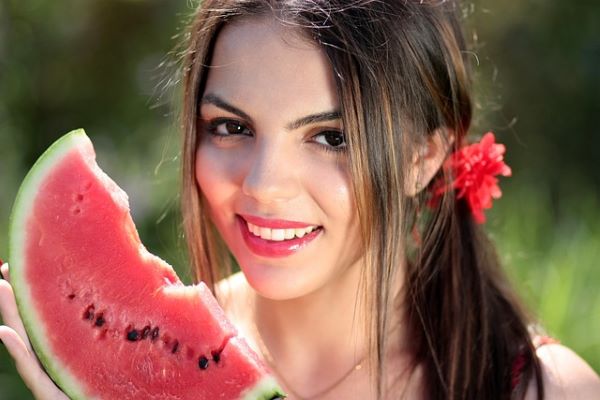When winter rolls in, our skin often takes a hit. The dry air, chilly winds, and constant indoor heating can leave it looking dull and feeling tight. But don’t worry—nature has a solution! Incorporating hydrating fruits and vegetables into your daily diet can work wonders for your skin’s glow.
Let’s embark on a 30-day challenge to embrace the best hydrating produce to keep our skin radiant all winter long.
Also, read: Oats for Your Skin: 30 Days of Natural Remedies for Winter Irritation
Why Hydration Matters for Winter Skin
You might wonder, “Isn’t drinking water enough?” While staying hydrated with water is essential, it’s not the full picture. According to dermatologists, what you eat also impacts your skin’s moisture levels. Fruits and vegetables with high water content, antioxidants, and vitamins provide the hydration and nourishment your skin needs to combat winter dryness.
The 30-Day Hydrating Food Challenge
Here’s how it works: for 30 days, include at least one hydrating fruit or vegetable in your meals. It’s simple, delicious, and doable.
Week 1: Start with the Basics
- Cucumber: With 95% water content, cucumbers are like a drink for your skin. Slice them into salads or snack on them raw.
- Watermelon: Even though it’s not summer, watermelon is still a fantastic hydrator if available in your region. A juicy slice can refresh your skin from the inside out.
- Tomatoes: Rich in water and antioxidants like lycopene, tomatoes protect your skin from winter-induced stress.
Week 2: Amp Up the Antioxidants
- Oranges: Packed with vitamin C and water, oranges help keep your skin plump and vibrant.
- Spinach: This leafy green contains hydration and skin-loving nutrients like vitamin E. Toss it into a warm soup or salad.
- Celery: Crunchy and refreshing, celery is an underrated hydrator perfect for a midday snack.
Week 3: Focus on Skin Repair
- Strawberries: High in vitamin C, strawberries support collagen production, which helps your skin maintain elasticity.
- Bell Peppers: Red, yellow, or green are full of water and antioxidants. Sauté them, roast them, or eat them raw.
- Carrots: Rich in beta-carotene and water, carrots help repair dry, flaky skin.
Week 4: Diversify Your Palette
- Pomegranate: Known for its anti-aging properties, pomegranate seeds are a juicy, hydrating snack or topping.
- Zucchini: Another water-packed veggie, zucchini is versatile enough to use in stir-fries, soups, or even baked goods.
- Pineapple: Its natural enzymes gently exfoliate and hydrate your skin from within. (Source)
The Science Behind It
Eating hydrating fruits and vegetables isn’t just a feel-good strategy—it’s backed by science. A study published in Dermato-Endocrinology highlights how antioxidants, vitamins, and water content in produce improve skin hydration, elasticity, and overall health.
Fruits like oranges and strawberries are rich in vitamin C, which boosts collagen production, while vegetables like spinach provide vitamin E, an antioxidant that protects the skin’s barrier. Meanwhile, the water content in cucumbers and tomatoes ensures your skin stays moisturized from within. (Source)
Personal Touch: My Experience with the Challenge
I’ll admit, I wasn’t always a fan of eating so many fruits and vegetables. But last winter, I gave this challenge a try, and the results were surprising. By the second week, my skin looked less dry, and those pesky patches of flakiness disappeared.
One of my favorite discoveries was pomegranate seeds. Adding them to my oatmeal not only made breakfast prettier but also gave my skin a noticeable glow. (Source)
Tips for Success
- Keep It Fresh: Use fresh produce whenever possible to get the most hydration and nutrients.
- Mix It Up: Don’t stick to just one or two items. A variety of fruits and vegetables ensures a wider range of benefits.
- Prep Ahead: Slice cucumbers, dice bell peppers, and store them in the fridge for easy snacking.
- Add to Everything: Soups, smoothies, salads—you can sneak hydrating produce into almost any dish. (Source)
FAQs
1. Why is my skin still dry even after eating hydrating foods?
While diet plays a significant role, external factors like harsh cleansers, lack of moisturizers, or cold weather exposure might also be affecting your skin.
2. Are these fruits and veggies suitable for all skin types?
Absolutely! Hydrating products benefits everyone, regardless of skin type.
3. How much should I eat daily for visible results?
Aim for at least 2–3 servings of hydrating fruits and vegetables each day.
4. Can I replace water with these foods?
No, these foods supplement your water intake, not a replacement. Keep sipping that water, too!
5. Is it better to eat these raw or cooked?
Both methods work. Raw produce retains more water, but cooking can make some nutrients, like beta-carotene in carrots, more bioavailable.
Fun Facts About Hydrating Foods
- Watermelon is nicknamed “nature’s natural hydrator” because of its high water content.
- One medium cucumber contains almost as much water as a small glass of H2O.
- Spinach is 91% water, making it one of the most hydrating leafy greens.
Wrapping It Up
Who knew something as simple as adding hydrating fruits and vegetables could make such a big difference? By committing to this 30-day challenge, you’re not just nourishing your skin—you’re also boosting your overall health.
So, grab that cucumber, slice up some oranges, and let’s keep our winter skin glowing. Trust me, your skin (and your taste buds) will thank you!





